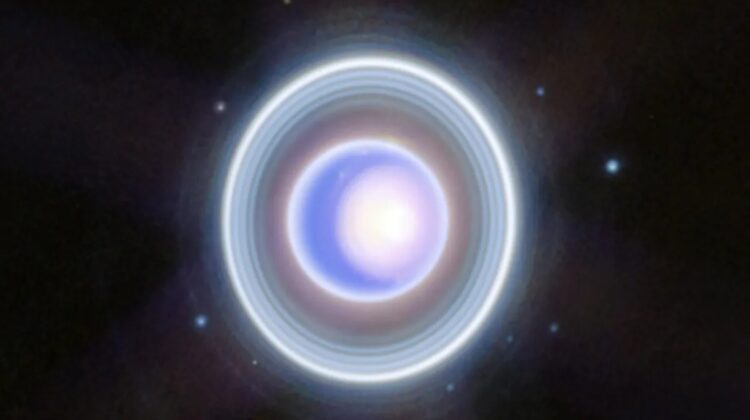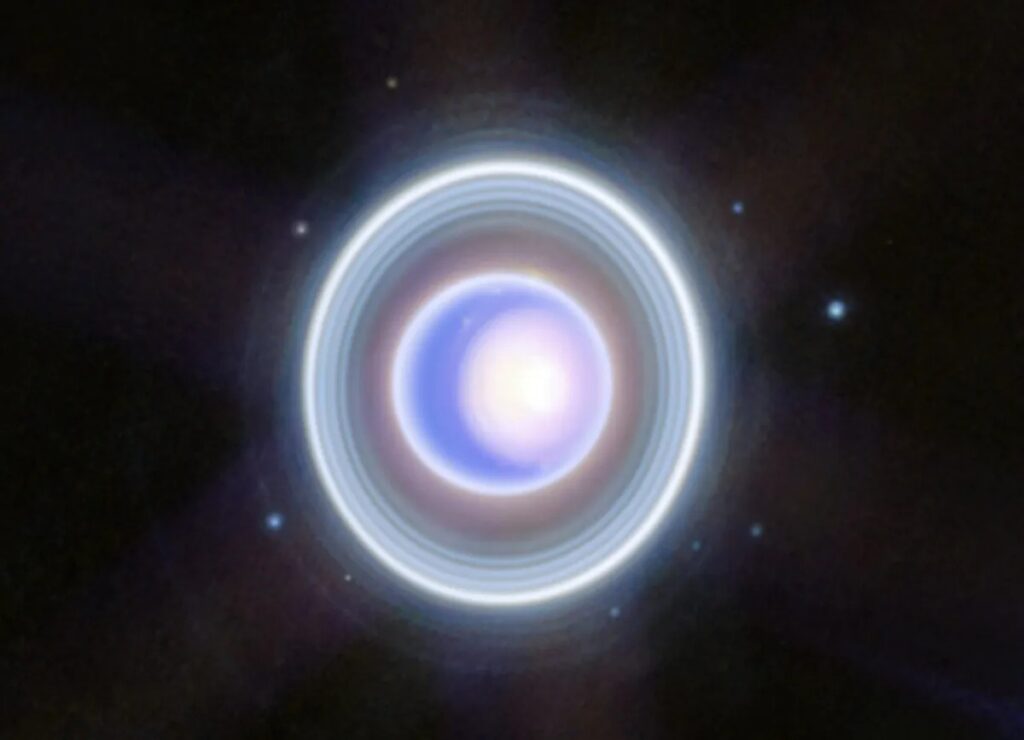
As the holiday season unfolds, the James Webb Space Telescope (JWST) presents astronomy enthusiasts with a captivating celestial gift—a stunning view of Uranus. Building on a spectacular image captured earlier this year, the space telescope has been diligently observing the distant ice giant planet, unraveling a tapestry of details previously unseen.
The latest image, released to mark the winter holidays, showcases intricate features of Uranus, including its dim inner and outer rings, with a focus on the elusive Zeta ring—remarkably faint and diffuse, nestled closest to the planet. The wide-field view provides a breathtaking spectacle, revealing at least 14 moons, more than half of the planet’s 27 known natural satellites. A closer inspection of the image unveils some moons positioned within the delicate rings, adding to the celestial allure.

Image Credit: NASA, ESA, CSA, STSCI
Beyond the enchanting dance of moons and rings, JWST’s keen observations delve into the atmospheric complexities of Uranus. In visible light, Uranus appears relatively featureless, resembling a smooth aquamarine-colored sphere, as witnessed by Voyager 2 in the 1980s. However, the infrared perspective offered by JWST exposes a different facet of the planet. Storms manifest as luminous dots on Uranus, and the full polar cap comes into view, providing a nuanced understanding of the planet’s weather patterns.
One of the distinctive features of Uranus is its peculiar axial tilt— a staggering 98-degree inclination compared to its orbit. This unique characteristic, believed to result from a colossal collision billions of years ago, allows JWST to capture the entire polar region in its observations. As Uranus approaches its solstice in 2028, aligning its axis directly with the Sun, the seasonal effects create a mesmerizing white dome, as depicted in the recent photo. JWST’s ongoing observations will play a crucial role in deciphering these effects and disentangling them from various meteorological phenomena.

Image Credit: NASA, ESA, CSA, STScI
Uranus, with its enigmatic complexities, stands apart from other planets in our solar system. The collaborative efforts of planetary scientists utilizing the capabilities of JWST promise to unravel the mysteries within this fascinating world. The data gathered will contribute significantly to constructing a more accurate and comprehensive understanding of Uranus, enriching our knowledge of the intricate workings of celestial bodies beyond our Earth.
In conclusion, JWST’s holiday gift to humanity transcends the festive season, offering a glimpse into the celestial wonders of Uranus. As the telescope continues its exploration and unveils the secrets hidden within the icy giant’s atmosphere, it reinforces the importance of space exploration in expanding our cosmic perspective and deepening our appreciation for the celestial marvels that grace our night sky.

Leave a Reply